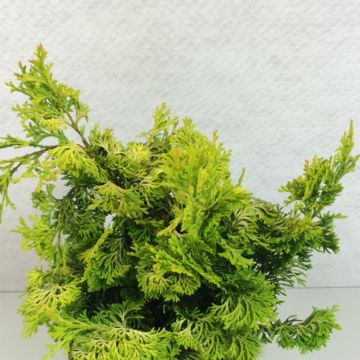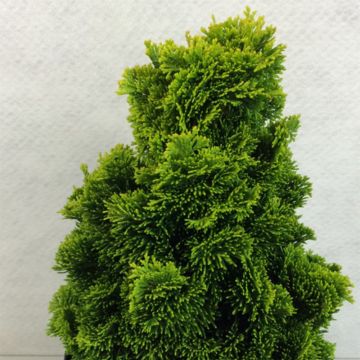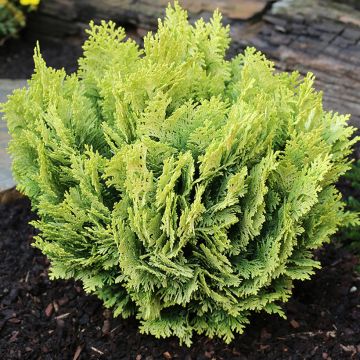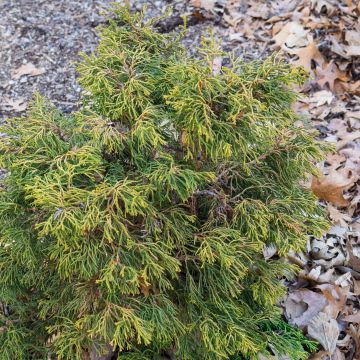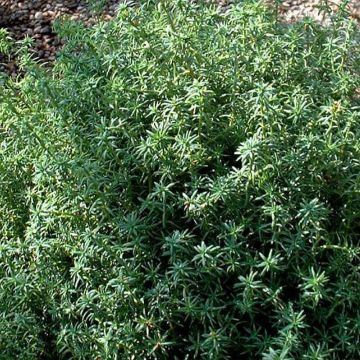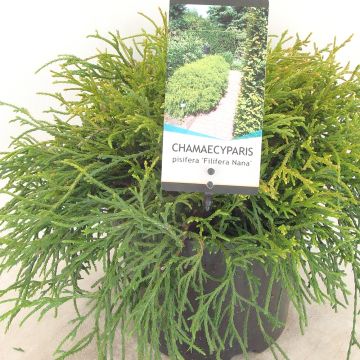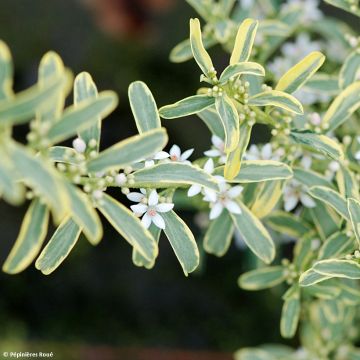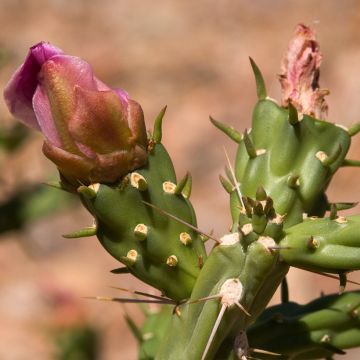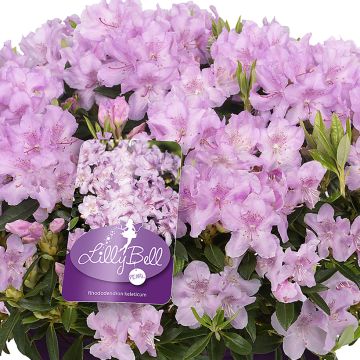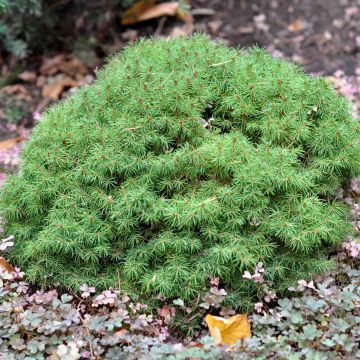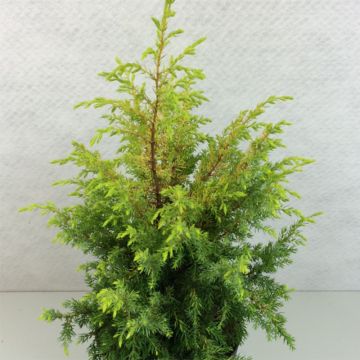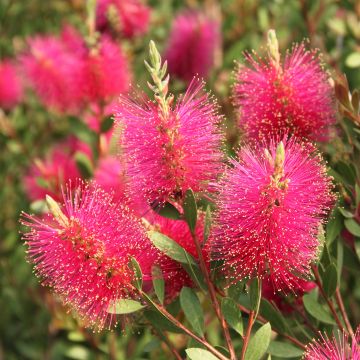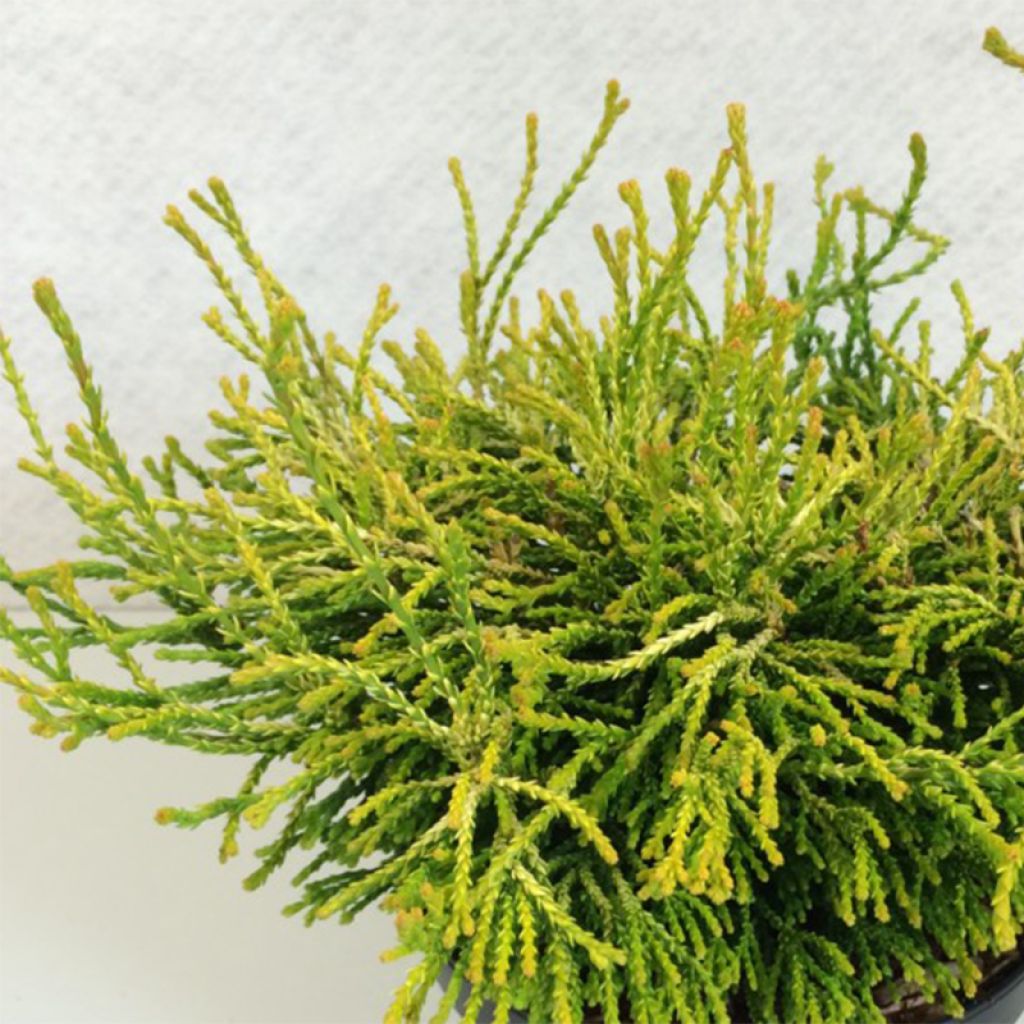

Chamaecyparis obtusa Gitte - Faux cyprès hinoki du Japon nain
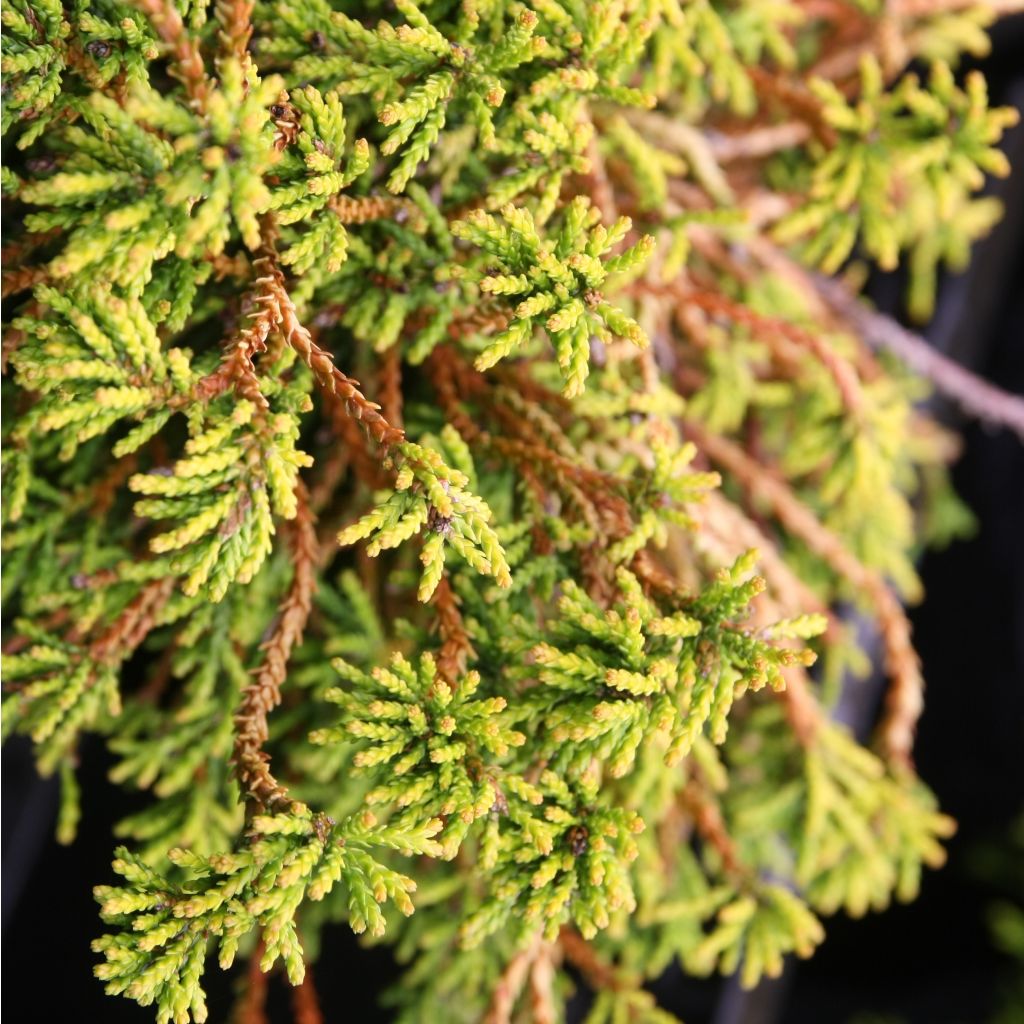

Chamaecyparis obtusa Gitte - Hinoki Cypress
Chamaecyparis obtusa Gitte - Hinoki Cypress
Chamaecyparis obtusa Gitte
Hinoki Cypress, Japanese Cypress, Hinoki False Cypress
This item cannot be shipped to the selected country
Delivery charge from €6.90
More information
Delivery charge from €6.90
More information
Schedule delivery date,
and select date in basket
This plant carries a 24 months recovery warranty
More information
We guarantee the quality of our plants for a full growing cycle, and will replace at our expense any plant that fails to recover under normal climatic and planting conditions.
From €7.90 for pickup delivery and €6.90 for home delivery
Express home delivery from €8.90.
Does this plant fit my garden?
Set up your Plantfit profile →
Description
Chamaecyparis obtusa 'Gitte' is a dwarf variety of false cypress, with a slightly irregular flat cushion habit. It stands out for its very fine, sinuate and arching red branches, covered with scaly foliage of splendid golden colour. With its slow growth and small size, it is ideal for decorating balconies, terraces, and rock gardens, and performs very well in pots. This conifer is robust, but it dislikes limestone. It prefers fertile, humus-rich, and well-drained soils and a sunny exposure.
Also known as hinoki cypress and reaching a height of 50m (164ft) in its natural environment, the false cypress is mainly used for making lacquered furniture and the construction of many buildings such as palaces. This dwarf variety, 'Gitte', with a spreading bushy habit, grows slowly to form a slightly loose and irregular cushion, wider than it is tall. After ten years of cultivation, it will reach a height of 40cm (15.7in) and a diameter of 50cm (19.7in). A mature specimen will measure 80cm (31.5in) in height with a span of 1m (3ft 4in), after an infinite amount of time. It bears thin, tortuous, and dense branches, covered with tiny golden-yellow scale-like leaves. In the centre of the 'cushion', the foliage is greener. Its young red branches form a beautiful combination with the golden foliage.
Chamaecyparis obtusa 'Gitte' is ideal for pot cultivation on a terrace or in small gardens thanks to its slow growth and small size. With its characteristic and bright silhouette, it will bring fantasy to your rock gardens. The architectural qualities of dwarf conifers naturally fit in the design of a contemporary garden, which prefers the aesthetics of shapes, silhouettes, and textures over flowers. These plants durably structure a bed, mark the pathways and border the terrace, easily replacing the strong presence of trimmed boxwood. They serve as a setting for small roses, peonies, or tousled grasses with very complementary forms. They can also be associated with small conifers with an upright, pyramidal habit or with ground-cover plants such as aubrietas, creeping gypsophiles, ceraistes, as well as flowering shrubs. The key is to play with volumes and colours.
Tips: Water during periods of high heat as it dislikes drought.
Chamaecyparis obtusa Gitte - Hinoki Cypress in pictures
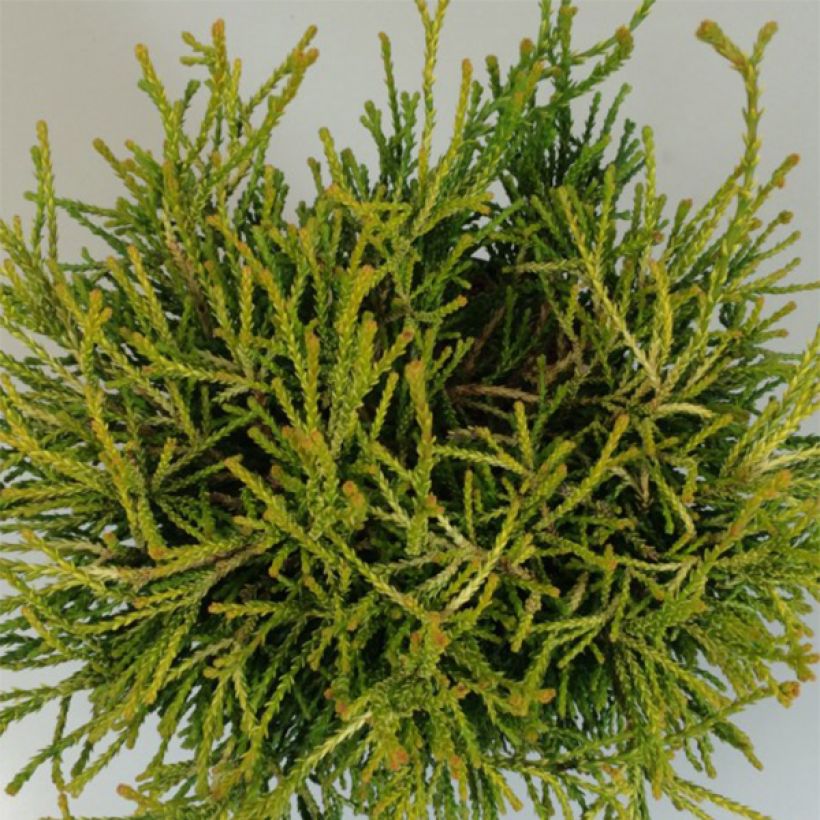

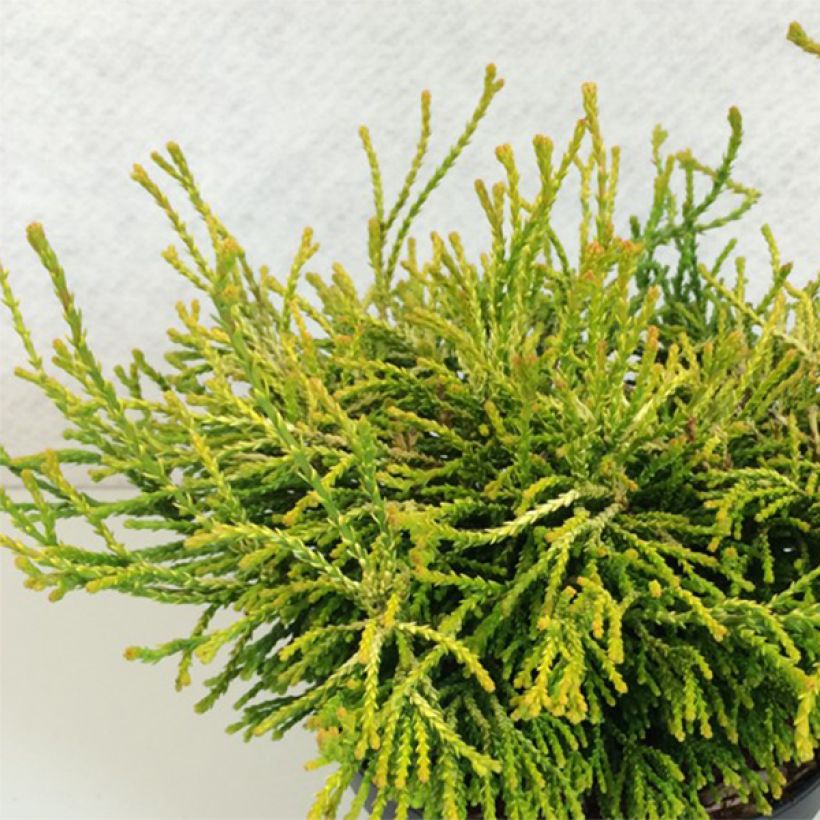

Plant habit
Foliage
Botanical data
Chamaecyparis
obtusa
Gitte
Cupressaceae
Hinoki Cypress, Japanese Cypress, Hinoki False Cypress
Cultivar or hybrid
Other Chamaecyparis
View all →Planting and care
Chamaecyparis obtusa 'Gitte' should be planted from September to November and from February to June in rich and deep, well-drained soil, either neutral or acidic. A soil rich in humus, compost or partly composed of ericaceous soil will be very suitable. Choose a sunny or semi-shaded location sheltered from prevailing winds. Soak the root ball well before planting. Add organic fertilizer at planting and water generously in the first few years. Apply a special conifer fertilizer every year in April and cultivate the soil in summer. It does not require pruning.
Planting period
Intended location
Care
This item has not been reviewed yet - be the first to leave a review about it.
Evergreen shrubs
Haven't found what you were looking for?
Hardiness is the lowest winter temperature a plant can endure without suffering serious damage or even dying. However, hardiness is affected by location (a sheltered area, such as a patio), protection (winter cover) and soil type (hardiness is improved by well-drained soil).

Photo Sharing Terms & Conditions
In order to encourage gardeners to interact and share their experiences, Promesse de fleurs offers various media enabling content to be uploaded onto its Site - in particular via the ‘Photo sharing’ module.
The User agrees to refrain from:
- Posting any content that is illegal, prejudicial, insulting, racist, inciteful to hatred, revisionist, contrary to public decency, that infringes on privacy or on the privacy rights of third parties, in particular the publicity rights of persons and goods, intellectual property rights, or the right to privacy.
- Submitting content on behalf of a third party;
- Impersonate the identity of a third party and/or publish any personal information about a third party;
In general, the User undertakes to refrain from any unethical behaviour.
All Content (in particular text, comments, files, images, photos, videos, creative works, etc.), which may be subject to property or intellectual property rights, image or other private rights, shall remain the property of the User, subject to the limited rights granted by the terms of the licence granted by Promesse de fleurs as stated below. Users are at liberty to publish or not to publish such Content on the Site, notably via the ‘Photo Sharing’ facility, and accept that this Content shall be made public and freely accessible, notably on the Internet.
Users further acknowledge, undertake to have ,and guarantee that they hold all necessary rights and permissions to publish such material on the Site, in particular with regard to the legislation in force pertaining to any privacy, property, intellectual property, image, or contractual rights, or rights of any other nature. By publishing such Content on the Site, Users acknowledge accepting full liability as publishers of the Content within the meaning of the law, and grant Promesse de fleurs, free of charge, an inclusive, worldwide licence for the said Content for the entire duration of its publication, including all reproduction, representation, up/downloading, displaying, performing, transmission, and storage rights.
Users also grant permission for their name to be linked to the Content and accept that this link may not always be made available.
By engaging in posting material, Users consent to their Content becoming automatically accessible on the Internet, in particular on other sites and/or blogs and/or web pages of the Promesse de fleurs site, including in particular social pages and the Promesse de fleurs catalogue.
Users may secure the removal of entrusted content free of charge by issuing a simple request via our contact form.



































